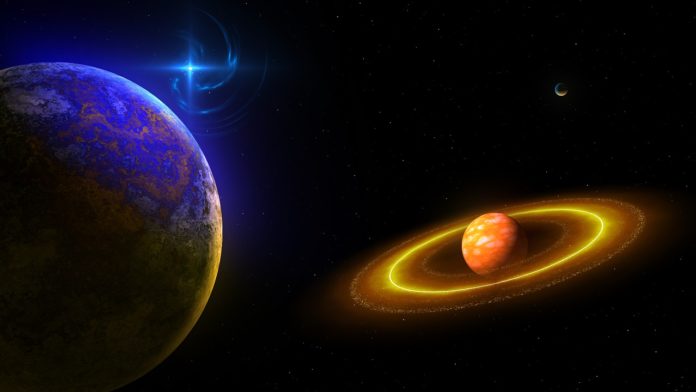Yale scientists have devised a new model that may help astronomers better understanding of space. Scientists took inspiration from mechanical engineering algorithm that predicts how wind streams past a helicopter’s rotor cutting edges.
Darryl Seligman, a graduate student Space is loaded with gas, clean, liquids, and turbulence. We needed to make a superior showing with regards to of representing the Swirling of this material.”
This swirling arises due to a vortex, which spins and pulls objects towards its center. Scientists actually wanted to show the interaction of vortices in an accretion disk, in which massive cosmic bodies covered with the rotating field of matter. Accretion disks are the breeding grounds for new planets, solar systems, and galaxies.
This new model called Maelstrom3D mainly focuses on the intersection of vortices in a less combustible cosmic environment.
Scientists started by looking at computer graphics simulations of explosions as a model. But later, they realized that such simulations did not contain the required level of complexity to model the turbulence of space. Thus, they came across a decade-old study by mechanical engineers. They developed an algorithm that shows how helicopter rotor blades respond to vortices.
Laughlin said, “When designing a helicopter, it’s literally mission-critical to get the blade-vortex interaction right. Darryl has been able to transfer the rigorous aeronautical modeling framework to simulations of astrophysical environments, and it’s clear that this makes a major difference.”
With the help of their model, scientists applied it to a pair of vortices inserted into a hypothetical patch of an accretion disk. They found the vortices may be shedding atmospheric waves as they spin. The number of orbits between the two vortices, which is related to the viscosity of the environment, is different as rendered with their model.
Seligman said, “We were stunned by the level of detail we were able to achieved.”
“Maelstrom3D might have other applications beyond astronomy. For example, a recent study suggested that ancient plesiosaurs generated vortices with their front flippers, which helped their back flippers generate more energy for propulsion.”
“That type of fluid dynamics is very similar to the vortices generated by blade vortex interactions in a helicopter rotor or airplane wing and is exactly the type of phenomenon our code is designed to handle.”
